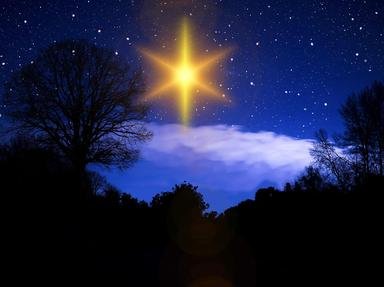Quiz Answer Key and Fun Facts
1. "Thus the total number of generations from Abraham to David is fourteen generations; from David to the Babylonian exile, fourteen generations; from the Babylonian exile to the Messiah, fourteen generations."
Which Gospel begins with this genealogy of Jesus, followed by an Infancy Narrative?
2. In which Gospel do we read of an angel announcing the birth of John to an aged and "barren" Elizabeth?
3. The archangel Gabriel greets Mary and tells her not to be afraid. "Behold, you will conceive in your womb and bear a son, and you shall name him Jesus." Which Gospel recounts this event?
4. In which Gospel do we read of the Visitation, in which the Virgin Mary visits her cousin Elizabeth?
5. In which Gospel does an angel reassure Joseph's fears about his pregnant betrothed?
6. The angel Gabriel delivers the Good News to shepherds, who then hear a chorus of angels, in which Gospel?
7. In which Gospel do the Magi appear, asking, "Where is the newborn king of the Jews? We saw his star at its rising and have come to do him homage."
8. In which Gospel do we read of the Flight into Egypt by Jesus, Mary, and Joseph?
9. Nativity scenes show lots of animals. Which text describes how the ox and the ass adored the Baby Jesus?
10. In which Gospel do we find the phrase "And the Word became flesh"?
Source: Author
gracious1
This quiz was reviewed by FunTrivia editor
looney_tunes before going online.
Any errors found in FunTrivia content are routinely corrected through our feedback system.
